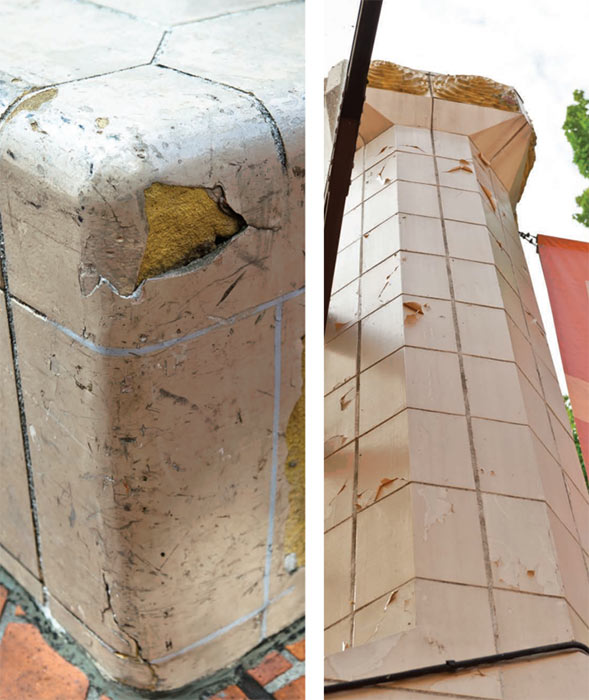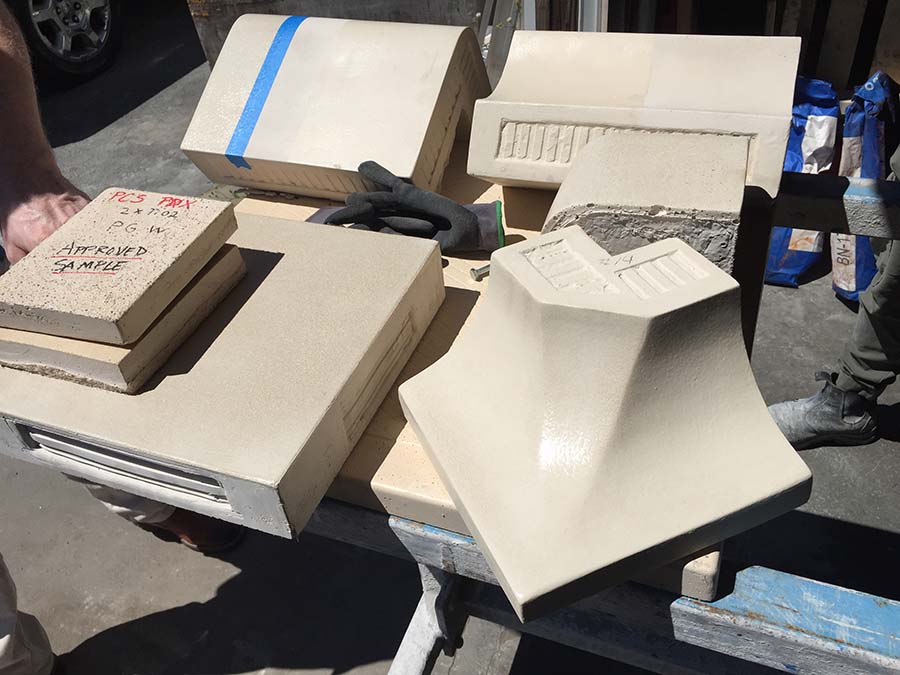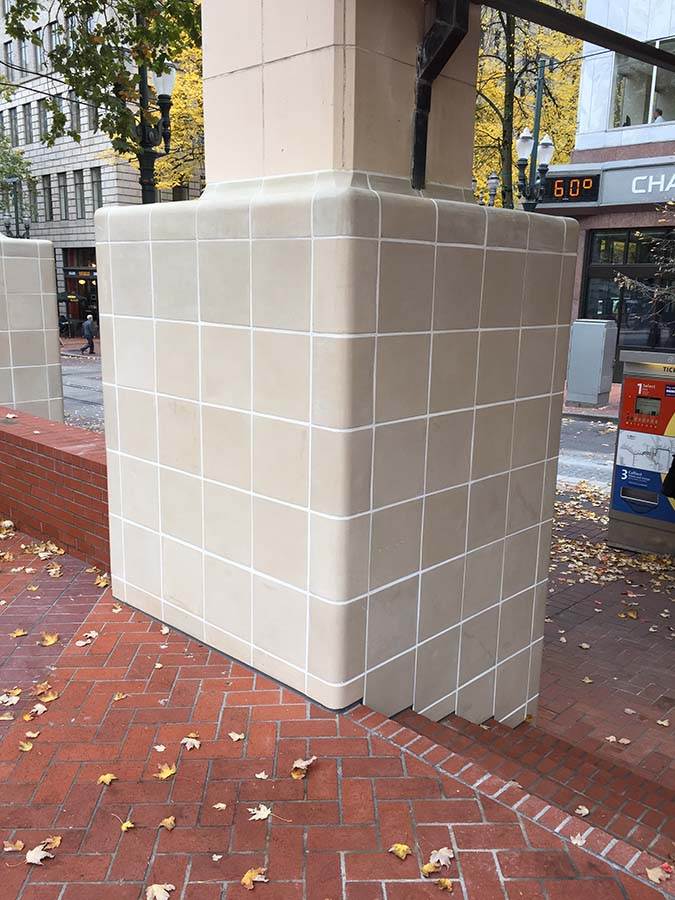The Problem
A living room takes all kinds of abuse. “Portland’s Living Room,” in the heart of downtown, is the beloved Pioneer Courthouse Square, and with over 10 million guests a year is one of the most visited places in Oregon. Light rail stops line three sides of the full-block park, and the busiest Starbucks in Portland occupies a bustling corner. Around the edges of the red brick plaza stand thirty-foot-tall “Stoa” columns clad in terra cotta. Hidden beneath the plaza’s upper deck is a building housing a TriMet ticket office, a KGW news studio, and several tourist services, the entrance marked by a large granite fountain. It is difficult to imagine the range of impacts the Square has endured over the last 30 years, but at the start of our project, the wear and tear was quite visible.
Our primary task was to replace the aged waterproofing protecting the upper plaza roof deck. To do this, we needed to remove half the brick pavers on the block, all the granite, and the terra cotta at the base of the Stoa columns, providing an opportunity to revitalize some of the Square’s most worn-out places. Preserving historic character was paramount; bricks and granite were sourced to exactly match the original materials, but the terra cotta solution was not as straight-forward.

The Solution
We considered Glass Fiber Reinforced Concrete (GFRC), precast concrete, and terra cotta. They all came in at a similar price point, but GFRC and precast solutions required applied coatings to match the remaining terra cotta, which we knew would soon be scraped away by creative vandals.
An article on Ultra High Performance Concrete (UHPC) caught my eye at just the right moment in our exploration. Until the last couple of years, UHPC had been used primarily in bridges and road construction, in situations where especially thin profiles and significantly lighter dead loads were cost-effective. Using UHPC, structural designs frequently do not require steel reinforcing. The flexural strength that steel normally provides is accomplished on a microscopic scale with fine-grained silica and added fibers.
Architectural applications are emerging, however. I ended up on the phone with the material manufacturer Ductal, who put me in touch with their west coast architectural fabricator, Szolyd. Szolyd had been experimenting with this fascinating concrete mix for several years, making elegant site furniture, ornate decorative elements, and terra cotta replacement pieces for buildings in their home town of Victoria, British Columbia.
The more we learned, the more intrigued we were. Color could be fine-tuned, since the material matrix is bright white. The color is then integral, so if the material breaks it isn't as noticeable. UHPC is extremely impact resistant, with a compressive strength about 6 times regular concrete, and because of its unique ductility is incredibly crack resistant, too. We were sold on performance! The on-budget bid sealed the deal.

The Process
An original terra cotta piece in each unique shape was sent to Szolyd for replication. Rubber molds were made to cast the final pieces. The texture was the trickiest part, since the original terra cotta was both smooth and weathered. SRG visited the factory in Victoria to approve a hand-applied wash of muriatic acid that removed just the right amount of concrete film to achieve the look we were targeting. We added a non-toxic, penetrating sealer to provide stain resistance and give it a sheen similar to the original glazing.

Color and texture are subtle things, difficult to convey over the phone or computer, and we all agree it would have been cost and time effective if we had visited the fabricator earlier in the process. For a project with a six-month construction duration, saving weeks if not months of sample iterations would have saved us all some sleepless nights. Next time we would plan for a couple of coordination visits and mock-ups early on.
The installation was completed in October. The column bases are far more durable than before, and the subtle color variations between the pieces will age well. I know we will enjoy observing the material’s performance over time. Perhaps future funding will allow for additional terra cotta replacement throughout the square, now that the research and development is in place!

Emily Dawson

